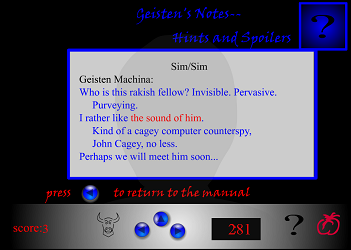Labyrinth: the Rulebook without Game
An ergodic Flash text exploring video game culture through the lens of playable manuals.
How does one read this clever piece, which touches on so many genres, such as poetry, fiction, game, theory, game manual, and codework? It claims to be a manual for an absent game, a bottomless pit, and a labyrinth for readers to get lost, wondering if indeed the game has already begun. The reader inhabits a character from the outset, a 35 year old married man, who can take on different roles in games belonging to popular RPG and videogame genres: science fiction, spy thriller, fantasy, and labyrinth exploration. Most of the writing is in the tradition of game manual for these types of games (here’s an old favorite) which at their best help immerse the readers into the world of the game and can be more fun than the game itself. In the case of tabletop RPGs, like Dungeons & Dragons, the game is the rulebooks, and all it requires is players and some dice for the necessary randomizations— making them good recipients of the label “cardboard computers,” as Matthew Kirschenbaum has used for tabletop wargames.
Marino’s piece blurs boundaries between instructions and game, between multiple genres, between theory and creative work, and between reality and fiction in a piece that uses links and lines tactically to produce a deeply immersive metafictional experience. An aspect of the work worth exploring isn’t accessible through the gaming interface, but is referenced in the work and was very deliberately placed in the HTML file by Marino, a leading scholar in Critical Code Studies— to access it, simply view the source code and look at the window scrollbars. You’ll know what direction take as you scroll through a hypnotically versed text.
(Source: http://iloveepoetry.com/?p=230, Leonardo Flores)
Critical writing that references this work:
| Title | Author | Year |
|---|---|---|
| I Love E-Poetry | Leonardo L. Flores | 2011 |


